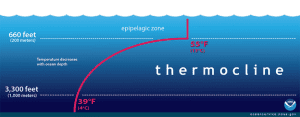TAG: GS 1: GEOGRAPHY
THE CONTEXT: A recent study published in Nature Communications sheds new light on the mechanisms driving the rapid melting of Antarctic ice shelves, particularly in the Amundsen Sea region of West Antarctica.
EXPLANATION:
- It was led by an international team of researchers from the Korea Polar Research Institute, Hokkaido University, and Seoul National University delved into the complex interplay between ocean currents, ocean floor topography, and ice shelf stability.
Revisiting Prior Assumptions:
- Contrary to previous assumptions that primarily linked ice shelf melting to wind patterns over the Southern Ocean, this study underscores the significant contribution of interactions between meandering ocean currents and the ocean floor.
- While winds have traditionally been seen as the main driver of warm water transport towards the ice shelves, the research highlights the pivotal role played by ocean currents and their dynamics in this process.
Focus on Pine Island and Thwaites Ice Shelves:
- The Pine Island and Thwaites ice shelves, known for their rapid changes and vulnerability to warming ocean waters, were at the forefront of the study.
- These massive ice shelves serve as critical barriers, restraining the flow of glaciers into the ocean.
- However, their rapid melting poses a grave threat to coastal communities worldwide due to the resultant rise in global sea levels.
The Role of Modified Circumpolar Deep Water (MCDW):
- Central to the study is the concept of “modified Circumpolar Deep Water” (MCDW), a layer of warm water beneath the surface waters.
- This warm water plays a crucial role in melting the ice shelves from below.
- The research emphasizes how the intensity and trajectory of ocean currents surrounding the ice shelves govern the influx of warm water, directly influencing the rate of melting.
Thermocline Depth:
- The researchers paid particular attention to the thermocline depth, which marks the interface between warmer deep waters and cooler surface waters.
- Variations in thermocline depth significantly impact the flow of warm water towards the ice shelves, highlighting its importance in understanding the melting process.
Challenging Conventional Wisdom:
- The study challenges the traditional belief that intensified westerly winds north of the Amundsen Sea primarily drive ocean currents along the shelf break, bringing warmer water towards ice shelf cavities.
- Instead, it underscores the role of meandering ocean currents and their interaction with the ocean floor in generating upwelling velocity, which transports warm water to shallower depths and accelerates ice shelf melting.
Implications for Future Projections:
- The findings of this study have profound implications for understanding and projecting future Antarctic ice loss.
- By emphasizing the internal oceanic processes driving ice shelf melting, the research suggests a need to reassess the significance of wind patterns in Antarctic ice dynamics.
- This nuanced understanding is crucial for accurate modeling and prediction of future sea level rise.
Thermocline:
- A thermocline is the transition layer between warmer mixed water at the ocean’s surface and cooler deep water below.

- Bodies of water are made up of layers, determined by temperature. The top surface layer is called the epipelagic zone, and is sometimes referred to as the “ocean skin” or “sunlight zone.”
- This layer interacts with the wind and waves, which mixes the water and distributes the warmth.
- At the base of this layer is the thermocline. A thermocline is the transition layer between the warmer mixed water at the surface and the cooler deep water below.
- It is relatively easy to tell when you have reached the thermocline in a body of water because there is a sudden change in temperature.
- In the thermocline, the temperature decreases rapidly from the mixed layer temperature to the much colder deep water temperature.
SOURCE: https://phys.org/news/2024-04-ocean-currents-threaten-collapse-antarctic.html
Spread the Word

